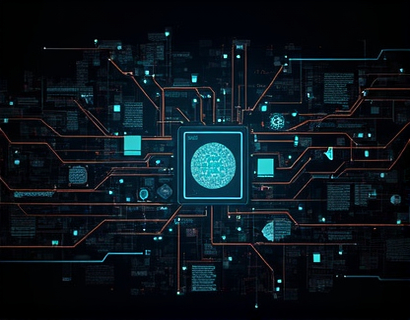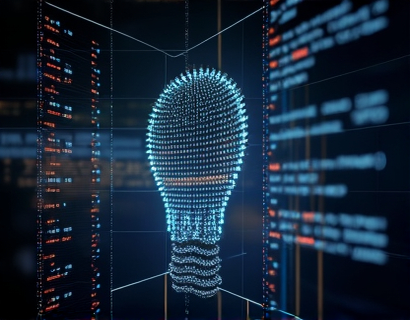Maximizing Digital Efficiency: Harnessing AI and Crypto for Enhanced Productivity Solutions
In the rapidly evolving digital landscape, the integration of Artificial Intelligence (AI) and cryptocurrency technologies is revolutionizing the way we approach productivity and efficiency. This article delves into the transformative potential of these cutting-edge technologies, exploring how they are reshaping workflows and daily tasks for tech innovators and early adopters. By leveraging AI and cryptocurrency, individuals and organizations can unlock new levels of productivity, streamline processes, and gain a competitive edge in their respective fields.
The convergence of AI and cryptocurrency is not just a technological curiosity but a practical solution for enhancing digital efficiency. AI, with its ability to process vast amounts of data and learn from patterns, is becoming an indispensable tool in automating repetitive tasks and providing insights that drive decision-making. Cryptocurrency, on the other hand, offers a decentralized and secure means of transaction, reducing reliance on traditional financial systems and opening up new possibilities for peer-to-peer economic activities.
AI-Driven Productivity Tools
One of the most significant impacts of AI on productivity is through the development of intelligent tools that automate routine tasks. These tools can range from virtual assistants that manage schedules and reminders to advanced software that automates data entry and analysis. For instance, AI-powered virtual assistants can learn an individual's preferences and habits over time, allowing them to anticipate needs and perform tasks proactively. This not only saves time but also reduces the cognitive load on users, enabling them to focus on more strategic and creative work.
Another area where AI shines is in data analysis and insights generation. Traditional methods of data analysis are time-consuming and often require specialized skills. AI-driven tools can process and analyze large datasets quickly, extracting meaningful insights and patterns that would be difficult for humans to discern. This capability is particularly valuable in fields such as business intelligence, finance, and healthcare, where data-driven decisions can lead to significant improvements in performance and outcomes.
Cryptocurrency and Decentralized Productivity Solutions
Cryptocurrency technology, particularly blockchain, offers a decentralized and transparent way to manage and execute transactions. In the context of productivity, this means creating systems that are not only secure but also more efficient and less prone to central points of failure. Decentralized applications (dApps) built on blockchain can facilitate seamless collaboration and resource sharing among distributed teams, ensuring that all participants have real-time access to the same data and can work together without intermediaries.
Smart contracts, a key feature of blockchain technology, can automate and enforce agreements without the need for intermediaries. In a productivity context, smart contracts can be used to automate workflows, ensure compliance with contractual obligations, and even manage payment processes. For example, a smart contract can be programmed to release payment to a service provider once the specified milestones are met, eliminating the need for manual verification and reducing the risk of disputes.
Enhancing Collaboration with Decentralized Networks
The decentralized nature of blockchain technology also extends to collaboration tools. Traditional collaboration platforms often rely on centralized servers, which can be vulnerable to outages and data breaches. Decentralized collaboration platforms, powered by blockchain, offer a more robust and secure alternative. These platforms store data across a network of nodes, ensuring that no single point of failure can disrupt the entire system. This not only enhances security but also improves reliability and availability.
Moreover, decentralized networks can facilitate more transparent and equitable collaboration. By using token-based systems, these platforms can reward contributors based on their contributions, ensuring that all participants are fairly compensated. This approach can be particularly beneficial in open-source projects and community-driven initiatives, where motivation and recognition are crucial for sustained engagement.
Tokenization of Assets and Resources
The tokenization of assets and resources is another innovative application of cryptocurrency that can boost productivity. By representing physical or digital assets as tokens on a blockchain, these assets can be easily traded, shared, and managed. For example, in the context of office space or equipment, tokenization can enable a sharing economy where resources are allocated based on demand and usage. This not only optimizes resource utilization but also reduces costs and environmental impact.
In a similar vein, digital assets such as intellectual property, content, and even time can be tokenized and traded. This opens up new opportunities for creators and professionals to monetize their work in decentralized markets. For instance, content creators can tokenize their work and sell it directly to consumers, cutting out intermediaries and retaining more of the revenue. This direct-to-consumer model can be particularly empowering for independent creators who may otherwise struggle to gain visibility and compensation in traditional markets.
Security and Privacy in Digital Efficiency
While AI and cryptocurrency offer numerous benefits, security and privacy remain critical concerns. AI systems, especially those that handle sensitive data, must be designed with robust security measures to prevent breaches and ensure data integrity. Techniques such as differential privacy and homomorphic encryption can be employed to protect user data while still allowing AI models to learn from it. These methods ensure that individual data points cannot be reverse-engineered, maintaining user privacy and trust.
Cryptocurrency, by its nature, provides a high level of security through cryptographic techniques. However, the decentralized nature of blockchain also introduces challenges such as the risk of 51% attacks and the need for secure wallet management. To mitigate these risks, it is essential to adopt best practices in security, such as using hardware wallets, enabling two-factor authentication, and staying informed about the latest security threats and solutions.
Case Studies and Real-World Applications
To better understand the practical applications of AI and cryptocurrency in enhancing productivity, let's look at a few real-world examples. One notable case is the use of AI in project management tools. Platforms like Asana and Trello have integrated AI features that help teams prioritize tasks, predict project timelines, and identify potential bottlenecks. These tools use machine learning algorithms to analyze historical data and provide actionable insights, enabling teams to make more informed decisions and work more efficiently.
Another example is the deployment of blockchain-based supply chain management systems. Companies like Walmart and Maersk have implemented blockchain to track the movement of goods in real-time, ensuring transparency and traceability. This not only improves efficiency but also enhances trust among supply chain partners. In the context of productivity, such systems can help businesses optimize their logistics and inventory management, reducing delays and costs.
In the creative industry, tokenization has found a unique application in the form of non-fungible tokens (NFTs). NFTs allow artists and creators to tokenize their digital works, providing a new way to authenticate and monetize their creations. This has opened up new revenue streams and opportunities for collaboration, as creators can directly engage with their audience and fans through token-based transactions.
Challenges and Considerations
While the potential of AI and cryptocurrency in enhancing digital efficiency is vast, there are several challenges and considerations that must be addressed. One of the primary challenges is the technical complexity involved in integrating these technologies into existing systems. Organizations need to invest in skilled personnel and infrastructure to ensure smooth implementation and maintenance.
Another consideration is the regulatory landscape. Cryptocurrency and blockchain technologies are still evolving, and regulations vary widely across different jurisdictions. Companies must navigate these regulations carefully to avoid legal issues and ensure compliance. Additionally, the environmental impact of cryptocurrency mining, particularly proof-of-work systems, is a growing concern that needs to be addressed through more sustainable practices.
Future Trends and Opportunities
Looking ahead, the integration of AI and cryptocurrency is poised to bring even more innovative solutions to the realm of digital efficiency. One exciting trend is the development of decentralized finance (DeFi) platforms that combine AI with blockchain to offer financial services such as lending, borrowing, and trading without traditional intermediaries. These platforms can provide greater access to financial tools and services, especially in underserved regions.
Another area of growth is the use of AI in managing and optimizing cryptocurrency portfolios. AI-driven trading bots can analyze market data, identify trends, and execute trades with high precision, potentially leading to better investment decisions and higher returns. This synergy between AI and cryptocurrency can democratize access to sophisticated investment strategies, empowering a broader range of individuals to participate in the digital economy.
Furthermore, the rise of edge computing, combined with AI and blockchain, is set to transform how data is processed and stored. By bringing computation closer to the source of data generation, edge computing reduces latency and bandwidth usage, making real-time AI applications more feasible. When paired with blockchain, this setup can ensure that data transactions are secure, transparent, and efficient, further enhancing productivity and efficiency.
In conclusion, the combination of AI and cryptocurrency is opening new frontiers in digital efficiency, offering powerful tools and solutions that can transform workflows and daily tasks. By embracing these technologies, tech innovators and early adopters can stay ahead of the curve, unlocking new levels of productivity and innovation. As the landscape continues to evolve, the potential for further advancements and applications remains vast, promising a future where digital efficiency knows no bounds.










































